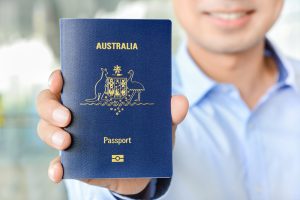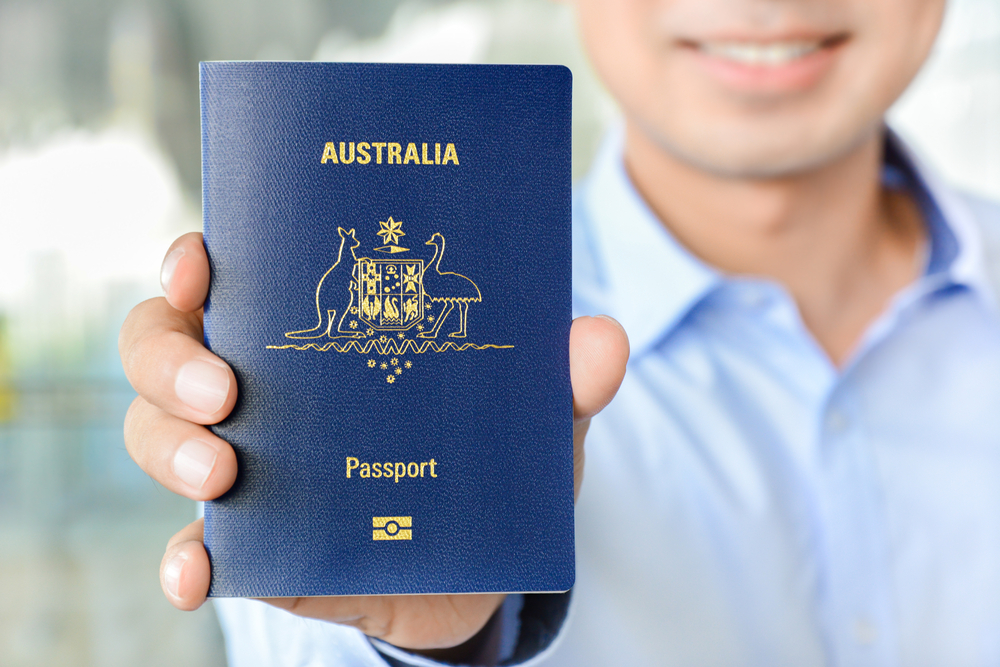What are the new immigration rules for Australia 2023? Navigating the immigration process can be exciting and challenging, especially in a country like Australia. As of 2023, the Land Down Under has implemented new immigration rules that have significant implications for individuals aspiring to live, work, study, or reunite with their families in this diverse nation. Understanding these latest regulations is paramount, as immigration rules can undergo frequent changes, making it essential for potential immigrants to stay informed about the most up-to-date requirements.
Whether you are a skilled professional seeking better opportunities, a student aiming for a world-class education, or a family member yearning to join loved ones in Australia, being well-versed with the new immigration rules can make all the difference in your visa application journey. The benefits of staying updated with these rules extend beyond mere compliance; they can considerably enhance your chances of a successful visa application, ensuring a smoother transition to your new life in Australia.
This article will delve into the key changes in Australia’s immigration rules for 2023. By providing a comprehensive overview of the latest updates, we aim to equip you with the knowledge necessary to make informed decisions and embark on your immigration journey with confidence. Whether you are a prospective skilled migrant, a student, or a family member seeking to reunite, understanding the new immigration rules for Australia in 2023 is the first step toward turning your dreams into reality. Let’s explore the exciting opportunities in this vibrant and welcoming country.
Contents
Overview of the Australian Immigration System
Australia’s immigration system is known for its points-based system, designed to attract skilled individuals, students, and family members to contribute to the country’s growth and cultural diversity. Australia’s robust and diverse economy offers various visa subclasses catering to different migration purposes.

The cornerstone of the Australian immigration system is the points-based system, primarily used for General Skilled Migration (GSM) visas. Prospective applicants are assessed based on various factors and awarded points accordingly. These factors include age, English language proficiency, educational qualifications, work experience, and other criteria, such as regional study or partner skills.
For skilled migration, points are awarded based on age, with younger applicants receiving higher scores. Proficiency in the English language is another critical factor, as a strong command of English is essential for successful integration into Australian society and the workforce. Educational qualifications and work experience are also factored in, with higher qualifications and relevant work experience in demand occupations resulting in more points.
Apart from skilled migration, Australia offers various visa subclasses for family migration, student visas, partner visas, and humanitarian and refugee categories. For family migration, sponsorship by an Australian citizen or permanent resident is often necessary. Student visas require enrollment in a registered course at an Australian educational institution. Partner visas involve demonstrating a genuine and ongoing relationship with an eligible Australian partner.
Choosing the most appropriate visa category is crucial, as it can significantly impact the success of an application. Applicants must carefully assess their circumstances, intentions, and long-term goals to select the visa pathway that best aligns with their aspirations. Seeking advice from qualified immigration professionals can be highly beneficial, as it ensures that the chosen visa category suits the applicant’s needs and maximizes their chances of approval.
Changes in Immigration Rules for Australia in 2023
As of 2023, the Australian immigration landscape has witnessed notable regulation changes, impacting various visa subclasses and eligibility requirements. These modifications have been introduced to align with evolving economic priorities, demographic shifts, and national security concerns.
1. Updates in Visa Subclasses:
– The General Skilled Migration (GSM) program has seen revisions in its occupation lists. Certain occupations have been added, while others might have been removed due to changing labor market demands.
– Family sponsorship visas have undergone adjustments, affecting eligibility criteria for bringing family members to Australia.
– Student visas may have witnessed changes in post-study work opportunities, allowing international students to gain practical experience after completing their studies.
2. Requirements and Processing Times:
– Changes in age limits may impact the eligibility of certain visa categories. Older applicants may face new limitations, while younger candidates might have expanded opportunities.
– English language proficiency requirements may have been updated, affecting the points awarded in the points-based system.
– Educational and work experience requirements for skilled migration visas may have been revised, impacting the points calculation for applicants.
3. Reasons Behind the Changes:
– Economic Factors: The modifications in the occupation lists and skilled migration pathways are often driven by the Australian government’s efforts to address specific skill shortages in the labor market. The government aims to enhance economic productivity and growth by focusing on in-demand occupations.
– National Security Concerns: Some changes may be implemented to strengthen border security and prevent misuse of the immigration system. These measures are designed to safeguard the nation from potential threats.
– Demographic Shifts: Australia experiences demographic changes over time, and its immigration policies are often adapted to accommodate these shifts. The adjustments may address population needs, regional development, and social cohesion.
Prospective immigrants must stay informed about these changes to ensure a well-prepared and successful visa application. By understanding the updated visa subclasses, requirements, and processing times, applicants can tailor their immigration plans to meet the latest guidelines. As immigration rules can continue to evolve, seeking advice from qualified immigration professionals or consulting official government sources becomes even more crucial in 2023. Being up-to-date with the latest regulations will ensure that individuals can make the most of the opportunities presented by Australia’s dynamic immigration system.
Skilled Migration Pathways in Australia – Changes and Impact in 2023
Australia’s skilled migration pathways have undergone significant changes in 2023, affecting skilled workers, professionals, and graduates aspiring to migrate to the country. The modifications primarily focus on the General Skilled Migration (GSM) program, which offers various visa subclasses for skilled individuals.
1. Changes in Skilled Migration Pathways:
– The GSM program has seen updates in its occupation lists, adding or removing certain occupations. This alteration is in response to the shifting demands in the Australian labor market and the need to address specific skill shortages.
– Skill assessment requirements for certain occupations may have been revised. Applicants must ensure their qualifications and work experience align with the latest skill assessment guidelines to qualify for skilled migration visas.
2. Updates in the General Skilled Migration (GSM) Program:
– The GSM program is one of the most popular pathways for skilled workers to obtain permanent residency in Australia. It includes visas like the Skilled Independent Visa (Subclass 189), Skilled Nominated Visa (Subclass 190), and Skilled Work Regional (Provisional) Visa (Subclass 491).
– The program operates on a points-based system, with points awarded for age, English language proficiency, work experience, and qualifications. The changes may have altered the number of points awarded for certain criteria, affecting the overall eligibility of applicants.
3. Impact on Prospective Immigrants:
– For skilled workers and professionals, the updates in the occupation lists can significantly influence their eligibility for specific visas. Those in occupations added to the list may find improved opportunities for skilled migration, while those in removed occupations might need to explore alternative pathways.
– Graduates aiming to work in Australia might encounter changes in post-study work opportunities. The modifications may impact the duration of the post-study work visa and the possibility of gaining work experience after completing studies.
– The modifications in the GSM program and skill assessment requirements may affect the overall competitiveness of applicants. Prospective immigrants must carefully assess their points score and eligibility based on the latest changes to increase their chances of a successful visa application.

Family Sponsorship and Partner Visas in Australia – Updates and Changes in 2023
In 2023, Australia introduced updates to its family sponsorship and partner visa categories, providing opportunities for Australian citizens and permanent residents to be reunited with their family members and partners.
1. Updates in Family Sponsorship and Partner Visas:
– The sponsorship process for family members and partners has undergone revisions to streamline the application procedure and improve processing times.
– Certain eligibility criteria may have been modified to ensure that genuine relationships are established between sponsors and visa applicants.
2. Changes in Eligibility Criteria and Requirements:
– For family sponsorship visas, Australian citizens or permanent residents can sponsor eligible family members to come to Australia. The eligibility requirements for both sponsors and applicants may have been updated to ensure the authenticity of the relationship and the sponsor’s ability to provide financial support.
– In partner visa categories, applicants in genuine and ongoing relationships with Australian citizens or permanent residents can apply to join their partners in Australia. The changes may have refined the evidence to demonstrate a genuine relationship, emphasizing the importance of providing substantial proof of shared commitments and cohabitation.
– Certain visa subclasses, such as Prospective Marriage Visas (Subclass 300), Partner Visas (Subclass 820/801 and Subclass 309/100), and Child Visas (Subclass 101 and Subclass 802), might have experienced specific updates to their requirements.
3. Processing Procedures:
– Family sponsorship and partner visa updates may have streamlined the processing procedures to expedite visa approvals. This ensures that families and partners can be reunited more efficiently.
– The introduction of online application systems or enhancements to existing platforms might have been implemented to simplify the process and provide better access to information.
The changes in family sponsorship and partner visa categories in 2023 reflect the Australian government’s commitment to supporting family reunification and genuine relationships. By modifying the eligibility criteria, requirements, and processing procedures, the government aims to create a fair and efficient system that prioritizes the welfare of families and partners. However, it remains crucial for sponsors and applicants to ensure that they meet the latest requirements and provide compelling evidence to demonstrate their eligibility, as adherence to the updated guidelines is essential for a successful family sponsorship or partner visa application.
Student Visas and Study Pathways in Australia – Changes and Post-Study Work Opportunities in 2023
In 2023, Australia modified its student visa regulations and study pathways, making it an attractive destination for international students seeking world-class education and post-study work opportunities.
1. Modifications in Student Visa Regulations and Study Pathways:
– The Australian government has updated its student visa regulations to streamline the application process and ensure a more straightforward experience for international students.
– Certain changes might have been introduced to expand study pathways and provide more options for students to pursue their desired courses.
2. New Policies for Post-Study Work Opportunities:
– One of the significant highlights for international students in Australia is the opportunity to gain post-study work experience after completing their studies. The government may have introduced new policies to enhance these opportunities.
– The changes in post-study work policies might include extensions to the duration of post-study work visas, allowing students to gain valuable work experience in their field of study for an extended period.
3. Conditions for Gaining Work Experience after Studies:
– To be eligible for post-study work opportunities, international students must have completed a qualification at an Australian educational institution. The type and duration of the qualification may affect the length of the post-study work visa granted.
– The policy changes may require students to apply for a post-study work visa within a specified period after completing their studies to ensure they can benefit from the work experience pathway.
Australia’s student visa and post-study work policies have consistently attracted international students due to the country’s high-quality education and welcoming environment. The modifications in 2023 are likely to enhance these offerings further, providing students with more opportunities to pursue their academic and career aspirations. International students completing their studies in Australia can take advantage of post-study work opportunities, which allow them to gain practical experience and contribute to their potential eligibility for skilled migration. By staying informed about the latest changes in student visa regulations and post-study work policies, international students can make the most of their time in Australia and pave the way for a successful and fulfilling career after graduation.
Humanitarian and Refugee Program in Australia – Changes and Processing Updates in 2023
In 2023, Australia’s humanitarian and refugee program witnessed certain changes to support and protect those seeking refuge and asylum in the country.
1. Changes in the Humanitarian and Refugee Program:
– The Australian government may have updated the policies and criteria for granting protection visas to refugees and asylum seekers.
– Adjustments in the humanitarian program may have been made to respond to global humanitarian crises and offer safe resettlement options to vulnerable populations.
2. Updates in Protection Visas and Asylum-Seeking Processes:
– Protection visas are granted to individuals who are found to be refugees or those who meet the criteria for complementary protection. The changes in 2023 may have refined the assessment process for such visas.
– The government might have introduced measures to expedite the processing of protection visa applications, considering the urgent needs of asylum seekers seeking safety and security.
– The updates may also include improvements in providing support services and assistance to refugees and humanitarian entrants, facilitating their integration into Australian society.
Australia’s humanitarian and refugee program reflects the nation’s commitment to protecting and supporting those in need. By adjusting to the program, the government aims to offer timely and effective responses to humanitarian crises and provide vulnerable individuals with the opportunity for a fresh start in a safe environment. The changes in processing refugee and humanitarian visa applications aim to ensure a fair and compassionate approach, granting timely assistance to those seeking refuge and protection.
What are the new immigration rules for Australia 2023?
In 2023, Australia introduced significant changes to its immigration rules, affecting skilled migration pathways, family sponsorship, partner visas, student visas, and the humanitarian and refugee program. To ensure a smooth immigration process, staying informed about the latest regulations is crucial. For accurate and up-to-date information, seeking professional advice or referring to official government sources is highly recommended. With these insights, prospective immigrants can make informed decisions and increase their chances of a successful visa application, paving the way for a fulfilling life in Australia’s diverse and welcoming environment.





